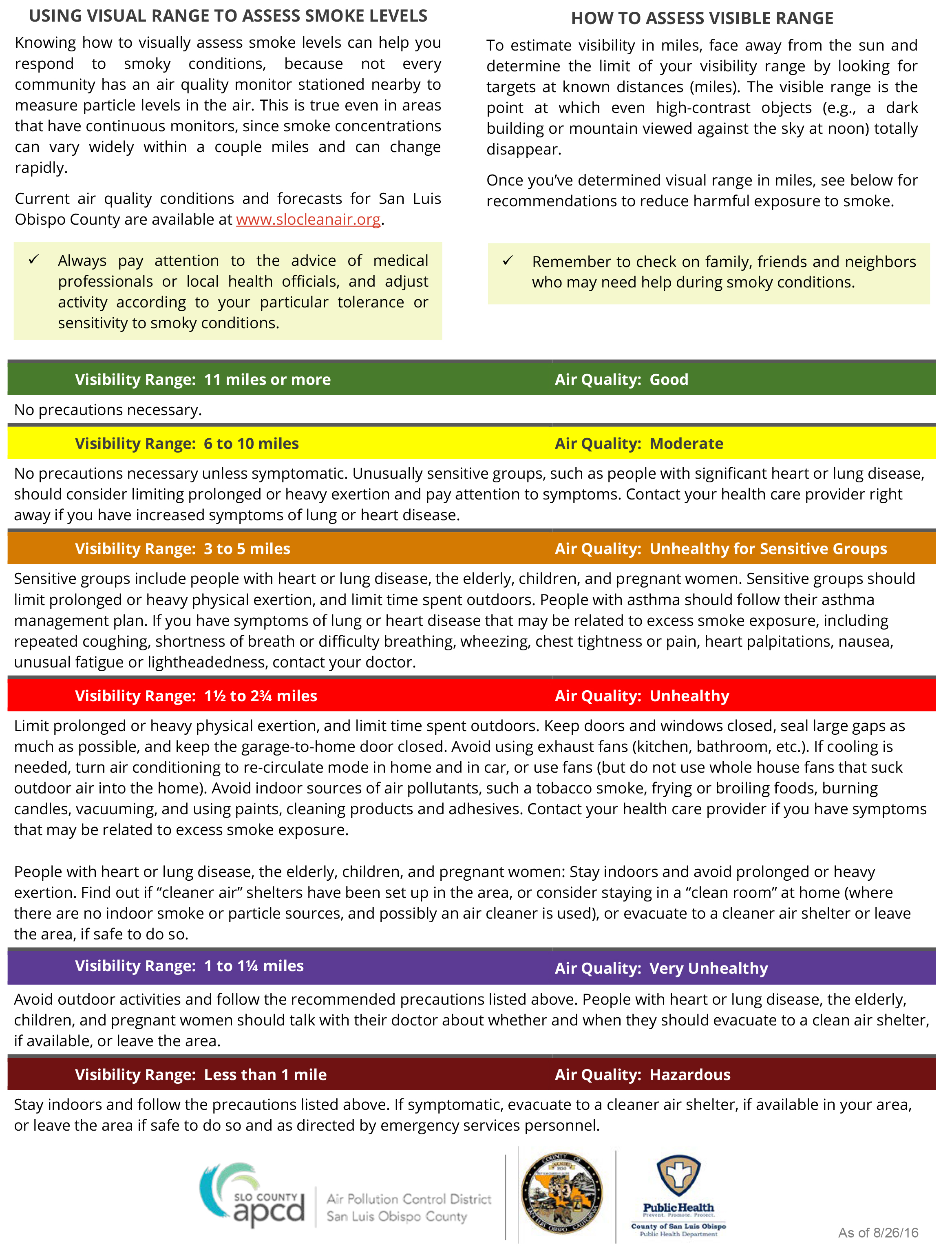EPA's AirNow Wildfire pages have great information on how you can get prepared, what to do when smoke is in the air and then help you better understand what to do after a fire. Check out their helpful webpages for more information.
Click here for the full APCD infographic!

As our local community starts to regain a little normalcy with businesses beginning to open back up, people will be venturing out more frequently. At the same time, the temperatures are heating up and that means fire season in SLO County has arrived – we have already started to see an uptick in unplanned vegetation fires across the county. The question of how to protect yourself and those close to you if smoke from wildfires or prescribed burns enters your community is on everyone’s mind. Smoke is a harmful air pollutant comprised mostly of particles but can also include toxic components as well. Here are our health protective tips when impacts from wildfire smoke occur this summer or fall, whether from a fire in our region or fires throughout the state.
For more information on face coverings, filters for your home, and how to stay safe during wildfires, please visit our website at SLOCleanAir.org or visit SLO County Public Health Department at SLOPublicHealth.org.
Protecting Children from Wildfire Smoke in the Pacific Southwest
Additional Guidance Documents
United State Forest Service - Wildfire Smoke & COVID-19
Mask or Respirator Use by Children and Pregnant Women During Wildfire Smoke Events
Wildfire Infographic

Click here to download the Wildfire Smoke and Your Health graphic!
Awareness is the key to protecting your health! The SLO County APCD provides current and forecasted air quality information so you can stay informed. If you notice air pollution levels are elevated in your area, limit your time outdoors and avoid outdoor exercise. It’s also best to keep your windows closed and run your AC on recirculate, if available, with a clean filter. Click here to learn more about the EPA's "Clean Room Tips." We also have developed a helpful poster for how to create a "Clean Room" in your home, click here to download!

If you have heart or lung disease, such as congestive heart failure, angina, chronic obstructive pulmonary disease, emphysema or asthma, you may experience health effects earlier and at lower smoke levels than healthy people.
Older adults are more likely to be affected by smoke.
Children are also more susceptible to smoke for several reasons: their respiratory systems are still developing; they breathe more air (and air pollution) per pound of body weight than adults; and they are more likely to be active outdoors.
Smoke can irritate the eyes and airways, causing coughing, a scratchy throat, irritated sinuses, headaches, stinging eyes or a runny nose. If you have heart or lung disease, smoke might make your symptoms worse.
People with heart disease might experience chest pain, palpitations, shortness of breath, or fatigue. People with lung disease may not be able to breathe as deeply or as vigorously as usual, and they may experience symptoms such as coughing, phlegm, chest discomfort, wheezing and shortness of breath.
When smoke levels are high enough, even healthy people may experience some of these symptoms.
The public is advised to consult your doctor if you are experiencing health problems. For those affected, some relief may be gained by staying indoors, limiting strenuous activities and setting any heating/ventilation/air conditioning systems to recirculation.
To clean ash, please do the following:
Health Recommendations for Schools & Outdoor Activities

